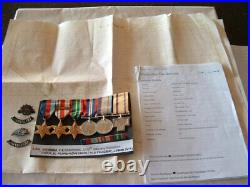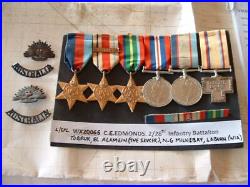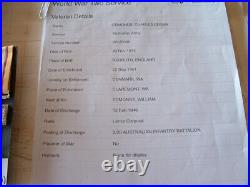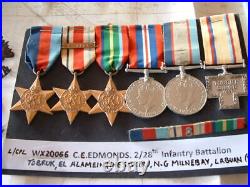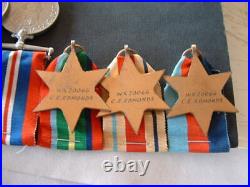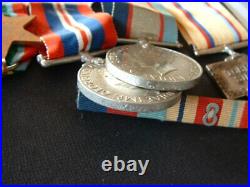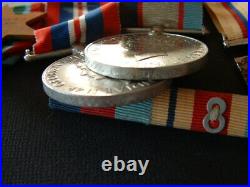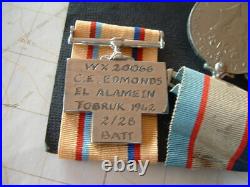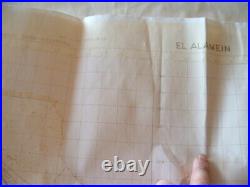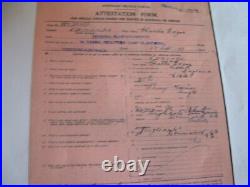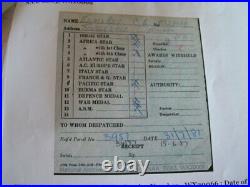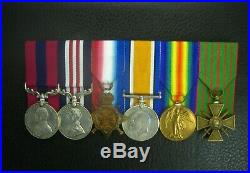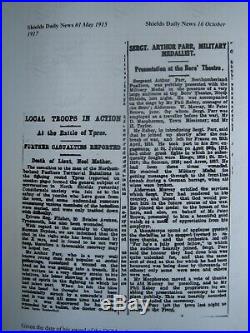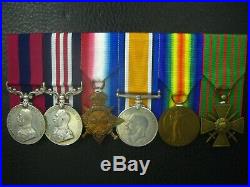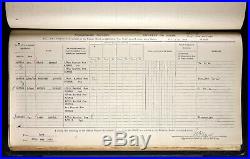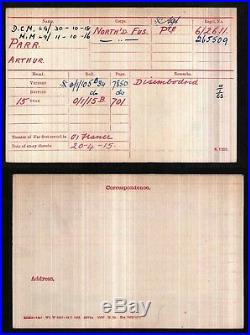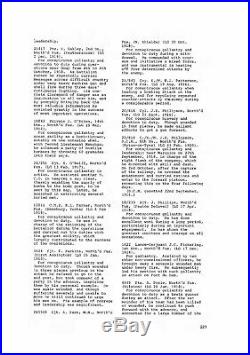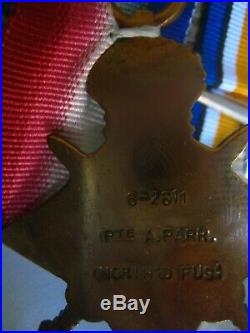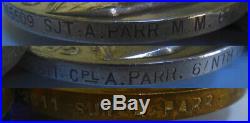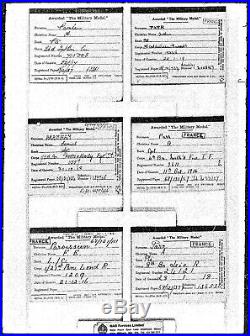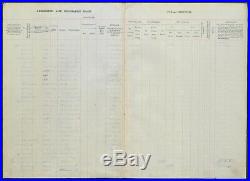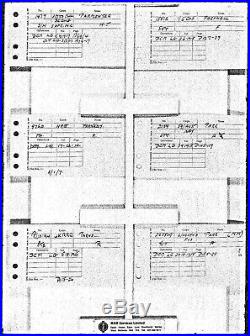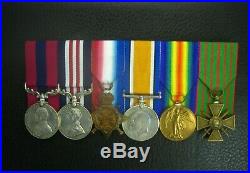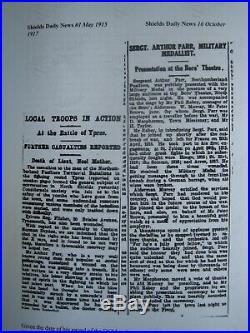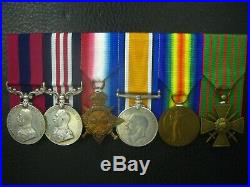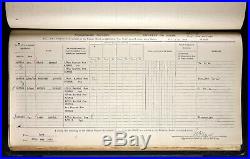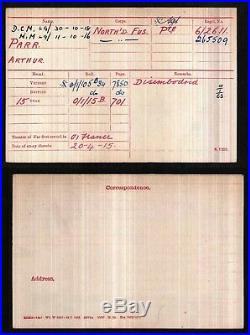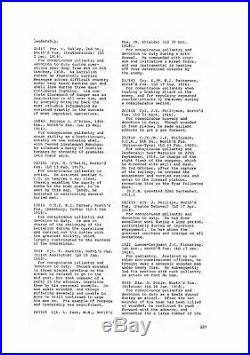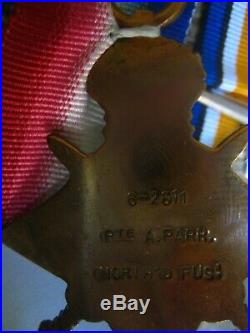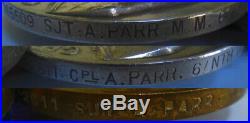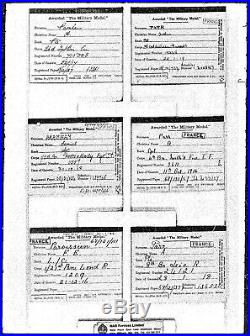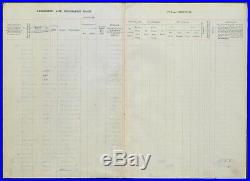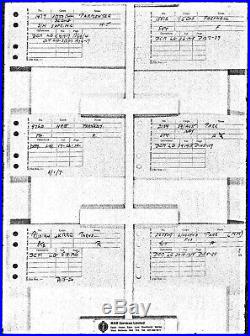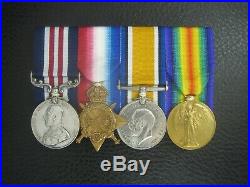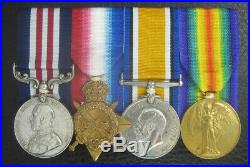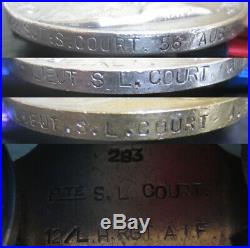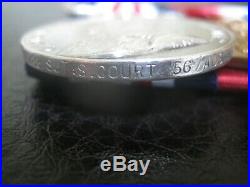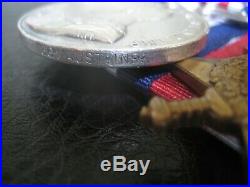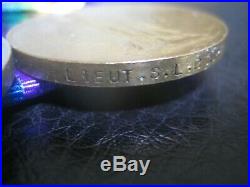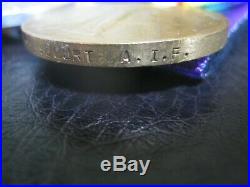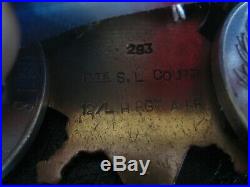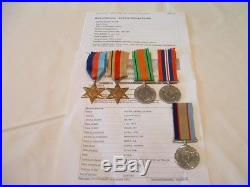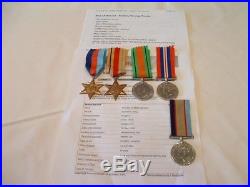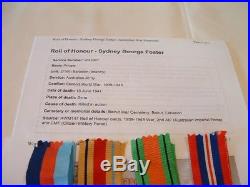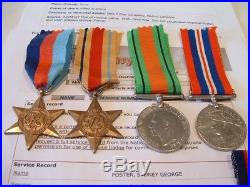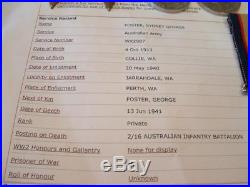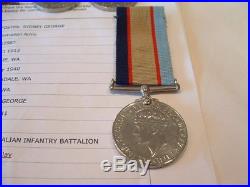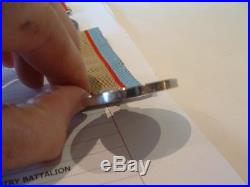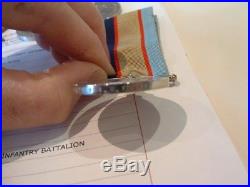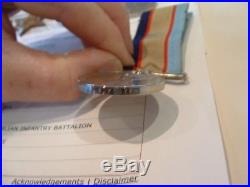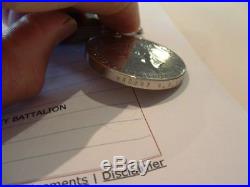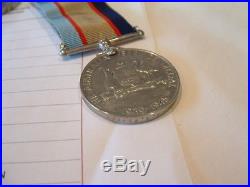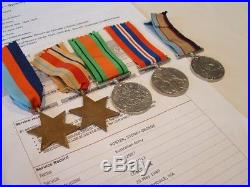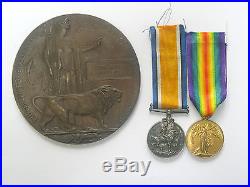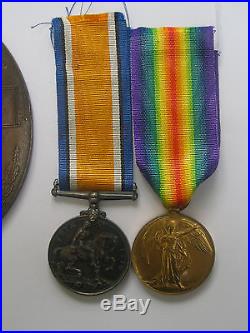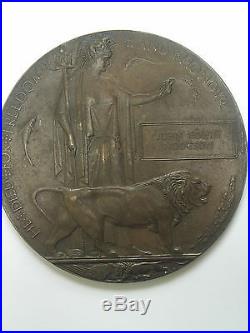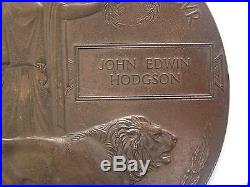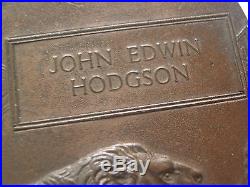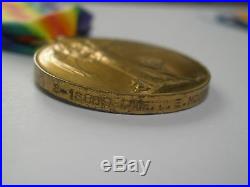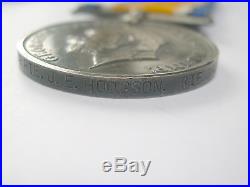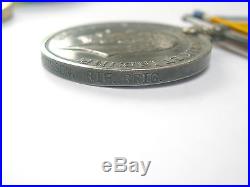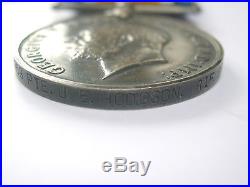- Modified Item: No
- Campaign: World War II
- Theme: Militaria
- Original/Reproduction: Original
- Country: Australia
- Product Type: Medals
- Era: 1940s
Posts tagged batt
WW11 MEDAL GROUP TO WX20066 C. MEDAL GROUP COMES WITH BADGES RIBBON BAR AND WHAT APPEARS FADED COPY OF MAP OF EL ALAMEIN. CHARLES EDGAR EDMONDS BORN REDRUTH ENGLAND 1912. A [A FARM CALLED TINGLE DALE] , 22 SEPT1941. SERVED WITH 2/28 BATTALION DISCHARGED WITH RANK OF LANCE CORPORAL 12 FEB 1946. COPY OF EDMONDS SERVICE HISTORY [OPEN ON NAA] PROVIDED. WX20066 EDMONDS TRAVELLED EXTENSIVELY DURING HIS SERVICE. THE FOLLOWING IS AN EXTRACT FROM HIS EMBARKATION/ SERVICE RECORDS. F ROTTNEST, 12/8/42 REIN 2/28 BN NORTHAM, 13/8/42 EMBARKED OVERSEAS, 10/10/42 DISEMBARKED M/E, 24/01/43 EMBARKED , 18/02/43 DISEMBARKED FREMANTLE, O4/08/43 EMBARKED CAIRNS , 11/08/43 DISEMBARKED N. G [MILNE BAY], 14/01/44 EMBARKED N. G [FINCHAVEN] 28/01/44 DISEMBARKED TOWNSVILLE, 18/6/45 EMBARKED TOWNSVILLE , ? DISEMBARKED MOROTAI, 16/7/45 EMBARKED PER WESTRALIA FOR SERVICE NORTH BORNEO, 20/7/45 /W. THE POCKET LABUAN, EVACUATED 2/3 FD AMB, 21/11/45 EVAC TRANSFERRED TO X LIST, 4/12/45 TO GEN HOSP 2/12 FIELD AMB, 4/12/45 TRANSFERRED TO HOLDING STRENGTH DEMOB, 8/1/46TRANSFERRED TO LTD W. A, 6/2/46 EMBARKED LABUAN “USAT” KING POINT VICTORY, 13/2/46 DISCHARGED W. ABOVE MENTIONED A VERY WELL TRAVELLED SOLDIER, MUCH MORE INFORMATION IN HIS RECORDS THAT IS OPEN IN NAA. ALL MEDALS CORRECTLY NAMED, STARS ENGRAVED AS ISSUED IN 1980, S ROUNDS IMPRESSED, NICELY ENGRAVED TOBRUK CROSS. SEE PHOTOS FOR DETAILS. COMES WITH COPY OF EXTENSIVE SERVICE RECORDS. The item “WW11 AUSTRALIAN MEDAL GROUP WX20066 C. E EDMONDS 2/28 BATT EL ALAMEIN, N. G, LABUAN” is in sale since Wednesday, June 30, 2021. This item is in the category “Collectables\Militaria\1939 – 1945 (WWII)”. The seller is “specklehead1″ and is located in Pinjarra, WA. This item can be shipped to Australia, all countries in continental Asia, United States, New Zealand, United Kingdom, Canada.
OF THE AISNE D. NORTHUMBERLAND FUSILIERS NCOS GROUP. WOUNDED AT ST JULIEN, THE 1/6TH HORRENDOUS BAPTISM OF FIRE AND ON TWO MORE OCCASIONS IN BY JANUARY 1916, HIS LOCAL NEWSPAPER, THE SHIELDS DAILY NEWS, FOLLOWED HIS SERVICE. HE WAS FURTHER AWARDED THE FRENCH CROIX DE GUERRE IN 1919. DISTINGUISHED CONDUCT MEDAL, G. 6/NORTH’D FUS:; MILITARY MEDAL, G. 6/NTH’D: FUS:-T. 1914-15 STAR 6-2611 PTE. BRITISH WAR MEDAL 1914-20. VICTORY MEDAL 1914-19 6-2611 SJT. London Gazette 30 October 1918. For conspicuous gallantry and devotion to duty during a withdrawal. He commanded with courage and initiative a mixed force, and was instrumental in beating off four determined attacks by the enemy. London Gazette 11 October 1916. Croix de Guerre London Gazette 7 January 1919. Arthur Parr was born in 1890 at North Shields, the son of Henry G. Parr, a sail maker of. Attesting for the 1/6th Territorial Battalion, Northumberland Fusiliers, Parr served in France from 20 April 1915, his battalion being almost immediately sent in to action during the 2nd battle of. Present at the battle of St Julien on the 26th of that month, the 6th battalion hard a horrendous baptism of fire, loosing almost half its men during the capture of enemy trenches and subsequent retreat to their own lines. Private Parr was one of the wounded, suffering a gunshot wound to the head. The Shields Daily News. 01 May 1915, a newspaper that wrote several articles on Parr during the War, noted that he was wounded whilst getting into one of the trenches and originally thought hed been hit on the head by the butt of one of his comrades rifles. The War Diary for the 6th battalion is particularly good as at the ends of each month, it details all casualties by name, number, rank and casualty date. It records that private. Parr was wounded a second time whilst in the trenches in the vicinity of Hooge, 17 June 1915; and was wounded yet again on 29 January 1916, two days after relieving the 1st Gordon Highlanders trenches in the vicinity of Hill 60. Awarded the Military Medal for gallantry, several months later, during one of the battles of the Somme Offensive, the. Shields Daily News 16 October 1917, again shed more light on his service as well as the reason for his award. It tells how Parr, now a Sergeant, had up until this point, been wounded three times, had taken part in the battles of St Julien, Hooge, St Eloi, the Somme and. Awarded for getting messages through to the front line trench during a barrage when all wires were broken. Given the date of his award of the DCM and even more so the citation, it is very likely the award was for his actions during the battle of the Aisne, specifically, the 27th May 1918, when the Germans put down a very heavy barrage of mixed high explosive and gas shells onto the Northumberlands positions, causing heavy casualties. This was followed this up with an attack along the whole line. As described in Parrs citation, the intensity of the assault caused the battalions to become mixed up during this part of the battle. The 6th Northumberlands held the line of redoubts, roughly 500 yards behind the battle line. The four redoubts, Bastion de Rotterdam, Centre de Quimper, Poste de Blois and Centre Marceau, were held by two companies of the battalion, four machine guns and two heavy trench mortars in emplacements that could fire over the battle line. The remaining companies were in reserve in trenches and dug outs next to Colonel Temperley’s battalion headquarters at P. Like the positions of other frontline battalions the trenches and underground shelters of the 6th Northumberlands were also pulverised by the German preliminary bombardment. By 5am the battle line had been broken on the front of the 149th Brigade, and German stormtroop units and tanks were already advancing on Centre Marceau, which was now held by mixed units of the 4th and 6th battalions. By 5.30 Colonel Temperley had ordered a counter attack with his reserve company, which managed to push the enemy out of Bastion de Rotterdam, but. Nevertheless, the advanced units of the German infantry managed to work themselves around the redoubts which were to be taken from the rear. A large number of men from the 6th Northumberlands were taken prisoner, especially officers some 17 in all including Colonel Temperley. The 1/6th recorded to loss of 8 men killed, 71 wounded and 541 missing in May 1918, almost all the casualties suffered on the 27th. In officers alone, 27 were casualties and from a strength of 34 Officers and 947 Men on 1st May 1918, by the 31st, they numbered just 12 Officers and 323 men! In July 1919, 1/6th battalion was reduced to a cadre and Parr end. His war serving with No. 1 Reception Battalion of the Northumberland Fusiliers; s. Condition, VF, some light contact wear. No service papers as yet found for Parr, however with some copied research, Newspaper articles and MIC on CD. A very good gallantry group, despite the. If you have any questions and require more images please get in touch and. This will generally be a Wednesday or Thursday, so please bear with me if it takes a few more days to get sent. SEE MY OTHER AUCTIONS FOR SIMILAR ITEMS. KEYWORDS: MEDAL MEDALS BOER KILLED WOUNDED BRIGADE AWARD CAPTAIN COMMANDER LIEUTENANT OFFICER KILLED WOUNDED 1815 AUSTRALIAN NEW ZEALAND ANZAC AIF GALLANTRY SOMME YPRES GALLIPOLI LIGHT HORSE INFANTRY BATTALION. The item “WW1 DCM MM CdG 1/6TH TERRITORIAL BATT. NORTHUMBERLAND FUSILIERS MEDAL GROUP” is in sale since Friday, July 31, 2020. This item is in the category “Collectables\Militaria\World War I (1914-1918)\Medals/ Ribbons”. The seller is “albatrosj1″ and is located in SCOTLAND. This item can be shipped worldwide.
OF THE AISNE D. NORTHUMBERLAND FUSILIERS NCOS GROUP. WOUNDED AT ST JULIEN, THE 1/6TH HORRENDOUS BAPTISM OF FIRE AND ON TWO MORE OCCASIONS IN BY JANUARY 1916, HIS LOCAL NEWSPAPER, THE SHIELDS DAILY NEWS, FOLLOWED HIS SERVICE. HE WAS FURTHER AWARDED THE FRENCH CROIX DE GUERRE IN 1919. DISTINGUISHED CONDUCT MEDAL, G. 6/NORTH’D FUS:; MILITARY MEDAL, G. 6/NTH’D: FUS:-T. 1914-15 STAR 6-2611 PTE. BRITISH WAR MEDAL 1914-20. VICTORY MEDAL 1914-19 6-2611 SJT. London Gazette 30 October 1918. For conspicuous gallantry and devotion to duty during a withdrawal. He commanded with courage and initiative a mixed force, and was instrumental in beating off four determined attacks by the enemy. London Gazette 11 October 1916. Croix de Guerre London Gazette 7 January 1919. Arthur Parr was born in 1890 at North Shields, the son of Henry G. Parr, a sail maker of. Attesting for the 1/6th Territorial Battalion, Northumberland Fusiliers, Parr served in France from 20 April 1915, his battalion being almost immediately sent in to action during the 2nd battle of. Present at the battle of St Julien on the 26th of that month, the 6th battalion hard a horrendous baptism of fire, loosing almost half its men during the capture of enemy trenches and subsequent retreat to their own lines. Private Parr was one of the wounded, suffering a gunshot wound to the head. The Shields Daily News. 01 May 1915, a newspaper that wrote several articles on Parr during the War, noted that he was wounded whilst getting into one of the trenches and originally thought hed been hit on the head by the butt of one of his comrades rifles. The War Diary for the 6th battalion is particularly good as at the ends of each month, it details all casualties by name, number, rank and casualty date. It records that private. Parr was wounded a second time whilst in the trenches in the vicinity of Hooge, 17 June 1915; and was wounded yet again on 29 January 1916, two days after relieving the 1st Gordon Highlanders trenches in the vicinity of Hill 60. Awarded the Military Medal for gallantry, several months later, during one of the battles of the Somme Offensive, the. Shields Daily News 16 October 1917, again shed more light on his service as well as the reason for his award. It tells how Parr, now a Sergeant, had up until this point, been wounded three times, had taken part in the battles of St Julien, Hooge, St Eloi, the Somme and. Awarded for getting messages through to the front line trench during a barrage when all wires were broken. Given the date of his award of the DCM and even more so the citation, it is very likely the award was for his actions during the battle of the Aisne, specifically, the 27th May 1918, when the Germans put down a very heavy barrage of mixed high explosive and gas shells onto the Northumberlands positions, causing heavy casualties. This was followed this up with an attack along the whole line. As described in Parrs citation, the intensity of the assault caused the battalions to become mixed up during this part of the battle. The 6th Northumberlands held the line of redoubts, roughly 500 yards behind the battle line. The four redoubts, Bastion de Rotterdam, Centre de Quimper, Poste de Blois and Centre Marceau, were held by two companies of the battalion, four machine guns and two heavy trench mortars in emplacements that could fire over the battle line. The remaining companies were in reserve in trenches and dug outs next to Colonel Temperley’s battalion headquarters at P. Like the positions of other frontline battalions the trenches and underground shelters of the 6th Northumberlands were also pulverised by the German preliminary bombardment. By 5am the battle line had been broken on the front of the 149th Brigade, and German stormtroop units and tanks were already advancing on Centre Marceau, which was now held by mixed units of the 4th and 6th battalions. By 5.30 Colonel Temperley had ordered a counter attack with his reserve company, which managed to push the enemy out of Bastion de Rotterdam, but. Nevertheless, the advanced units of the German infantry managed to work themselves around the redoubts which were to be taken from the rear. A large number of men from the 6th Northumberlands were taken prisoner, especially officers some 17 in all including Colonel Temperley. The 1/6th recorded to loss of 8 men killed, 71 wounded and 541 missing in May 1918, almost all the casualties suffered on the 27th. In officers alone, 27 were casualties and from a strength of 34 Officers and 947 Men on 1st May 1918, by the 31st, they numbered just 12 Officers and 323 men! In July 1919, 1/6th battalion was reduced to a cadre and Parr end. His war serving with No. 1 Reception Battalion of the Northumberland Fusiliers; s. Condition, VF, some light contact wear. No service papers as yet found for Parr, however with some copied research, Newspaper articles and MIC on CD. A very good gallantry group, despite the. If you have any questions and require more images please get in touch and. This will generally be a Wednesday or Thursday, so please bear with me if it takes a few more days to get sent. SEE MY OTHER AUCTIONS FOR SIMILAR ITEMS. KEYWORDS: MEDAL MEDALS BOER KILLED WOUNDED BRIGADE AWARD CAPTAIN COMMANDER LIEUTENANT OFFICER KILLED WOUNDED 1815 AUSTRALIAN NEW ZEALAND ANZAC AIF GALLANTRY SOMME YPRES GALLIPOLI LIGHT HORSE INFANTRY BATTALION. The item “WW1 DCM MM CdG 1/6TH TERRITORIAL BATT. NORTHUMBERLAND FUSILIERS MEDAL GROUP” is in sale since Sunday, June 21, 2020. This item is in the category “Collectables\Militaria\World War I (1914-1918)\Medals/ Ribbons”. The seller is “albatrosj1″ and is located in SCOTLAND. This item can be shipped worldwide.
A FINE WW1 AUSTRALIAN 1917 YPRES M. GROUP TO A 56 BATTALION AIF NCO AND EX 12TH LIGHT HORSE REGIMENT GALLIPOLI VETERAN, HE WAS LATER COMMISSIONED LIEUTENANT. 56/AUST: INF:; 1914-15 STAR 283 PTE. BRITISH WAR AND VICTORY MEDALS LIEUT. Was attached to the 5th Divisional Pack Transport Troop for just over a week between 22nd September 1917 and 1st. Within days he would be Awarded MM for Gallantry supplying the front line around Glencourse Wood. At the start of the 5th. Divisions attack on Polygon Wood. London Gazette 12 December 1917. The original recommendation states. On two occasions Sergeant Court displayed courage and resource on convoy duty in the vicinity of Hooge and Glencourse Wood in rallying men and keeping convoy intact under shell fire at night on 25th and 26th September 1917. A 24 year old Labourer from Bingara enlisted in the Australian Imperial Force on 8th January 1915. March 1915, Court joined the 12th Light Horse Regiment, at. Which was then forming and was assigned to B troop. On completion of forming the Regiment embarked for. In two groups, the first on 11th June 1915 aboard HMAT A29 Suevic including. During the voyage to. The part of the 12th Light Horse Regiment travelling on the HMAT A29. And landed on 12th July 1916 to bolster the defences of the British garrison which was under pressure from Yemeni tribesmen who were threatening an attack. By 18th July no attack had occurred and the threat diminished allowing the Regiment re-embarked to. Prior to landing on Gallipoli, the 3 Squadrons of the 12. Light Horse were attached to other Light Horse Regiments already serving on the Peninsular. B Squadron became D Squadron of the 7th Light Horse Regiment, serving with them at Gallipoli from 29. During their time at Gallipoli, the 7. Light Horse were deployed on on the far right of the front line, in the southern regions of Anzac. November, his departure having been delayed so he could serve 14 day No2 Field Punishment for gambling! Court remaining with the 7. Light Horse in Gallipoli until they were evacuated on 20th December 1915. Transferring back to the 12. Light Horse when it reformed in. February 1916, he was promoted Corporal the next day. Court would continue to serve with the Light Horse, the Regiment moving to the. Taking part in its defence. June 1916 Court was admitted to hospital with conjunctivitis. June he was invalided to. Spent the following 6 months in hospital, recuperating and then training in. Until transferred to the 56th Australian Infantry Battalion on 2. February 1917, serving with them until the end of the War. He was promoted Temporary Sergeant on 27. May 1917 being confirmed to that rank in August. SERVICE WITH 56 BATTALION AUSTRALIAN INFANTRY. On 14 February 1916 as part of the “doubling” of the AIF. Half of its recruits were Gallipoli veterans from the 4th Battalion, and the other half, fresh reinforcements from. In early 1917 the 56th Battalion participated in the advance that followed the German retreat to the Hindenburg Line. It was spared the assault but did, however, defend gains made during the second battle of Bullecourt. Later in the year, the AIF’s focus of operations switched to the Ypres sector in. The 56th’s major battle here was at Polygon Wood on 26 September. With the collapse of. In October 1917, a major German offensive on the Western Front was expected in early 1918. This came in late March and the 5th Division moved to defend the sector around Corbie. The 14th Brigade, took up positions to the north of Villers-Bretonneux and held these even when the village fell, threatening their flanks. Once the German offensive had been defeated, the Allies launched their own offensive in August 1918. The 14th Brigade did not play a major role in these operations until late in the month, but its actions were critical to the capture of Peronne, which fell on 2 September. The 56th fought its last major battle of the war, St Quentin Canal, between 29 September and 2 October 1918. It was resting out of the line when the Armistice was declared on 11 November. It ceased to exist as a separate entity on 10 April 1919, when the remnants of all of the 14th Brigade’s battalions were merged into a single unit. Probably due to his mounted service experience. Was attached to the 5th Divisional Pack Transport Troop for just over a week between 22nd September 1917 and 1. At the start of the 5. 5TH DIVISIONAL PACK TRANSPORT TROOP, FROM THE STORY OF THE 5TH DIVISION. An important administrative event of the Blaringhem period was the formation of a Divisional Pack Transport Troop. This was a large troop of about 300 pack animals, and the necessary animals and personnel were secured by uniting under one organisation detachments of men and animals from the whole of the transport units of the Division. The idea was to centralise all forward pack transport under one control in order to ensure equal distribution in the work of supply in the forward areas. Under the old arrangement, which worked well enough in easy sectors, it might happen that a brigade in the line had so many casualties in its pack animals, or might so overwork them, that its forward supplies would partially break down, while the pack animals in another brigade in reserve would be having very little work to do. Centralising the pack animals of the entire Division under one control would obviate any danger of this and would also secure equal distribution of work to men and animals. The chief argument against the innovation was that transport personnel would work better if they felt that they were labouring for their own units, instead of partially losing their identity in a Divisional Troop. General Hobbs and Colonel Bruche weighed the matter carefully, and decided that the certainty of regular supplies reaching every unit of the Division must be the first consideration, even if a very natural sentimental repugnance existed to a temporary loss of unit individuality. Curtis (5th Divisional Train) was made O. Divisional Pack Transport Troop and under his control it soon became involved in work of the greatest importance. The Divisional Pack Transport Troop was located about half-way between Dickebusch and. Staff Captains of brigades intimated daily the number of pack animals required for each unit in the brigade, and these animals reported every evening at the quartermaster’s stores of the various units. Here they were loaded up with the next day’s issue of food and water and carried it, under the direction of guides supplied by the units concerned, to wherever it was wanted. By means of the Divisional Pack Transport Troop, eighty-four pack animals more were available for the work of supplying the forward units than would have been the case if each unit had worked its own pack transport. This result was attained partly by reason of the fact that the supplies of the reserve brigade could be delivered on wheels by the Divisional Train. On the 28th of October the Division was relieved on the Broodseinde Ridge by the 2nd Australian Division and D. Moved back again to Scottish Lines on that date. The Divisional Pack Transport Troop having admirably fulfilled the purpose for which it was created, was disbanded on the same day and Capt. Curtis and his fine staff were able to look back on a hard task well and faithfully carried out. Many of their animals had been killed by shells or drowned in the mud and few people in the Division were more familiar than the Transport personnel with that hideous road which wound past Hell Fire Corner, Birr Crossroads and Bellevarde Lake up the Westhoek Ridge, and thence on to the Broodseinde Ridge. Major Langley and his provost and traffic control detachments, too, and the 5th D. Were on it night and day and the sustained heroism of these men and of the medical and signal details employed in the same area almost equals that of the front line troops. Continued to service with 56 Battalion and after a spending February 1918 in hospital, was detached again to 5. Division HQ (Salvage Party) from 15. In August 1918, Court was sent to. To join the Cadet Battalion and was commissioned Second Lieutenant 56 Battalion on 4th January 1919. In Courts Cadet report, it notes his Standard of Education is Poor and regarding ability to train a platoon; His knowledge is not very good. He can instruct when he knows the subject. However regarding ability to Command a platoon, he was noted as Good and under Special Qualifications; Riding. Would have completed his course 10. He has been handicapped by lack of education but has worked hard and with some knowledge will make an instructor. His command over men is good. I consider that he will make an efficient platoon commander. Was sent back to 56 Battalion in. He was finally discharged from the Army on 2. A superb group to a soldier who saw a great deal of action at both Gallipoli with the Light Horse, France with the Infantry and a rare MM to the 5. Division Pack Transport Troop, a short lived unit within the Division. Condition VF or better, mounted for display, light contact marks overall. SEE MY OTHER AUCTIONS FOR MORE WW1 AIF GALLANTRY AWARDS. PLEASE NOTE; If you have any questions and require more images please get in touch. KEYWORDS: MEDAL MEDALS BOER KILLED WOUNDED BRIGADE AWARD CAPTAIN COMMANDER LIEUTENANT OFFICER KILLED WOUNDED 1815 AUSTRALIAN NEW ZEALAND ANZAC AIF GALLANTRY SOMME YPRES GALLIPOLI LIGHT HORSE INFANTRY BATTALION WW1 WW2. The item “WW1 AUSTRALIAN MM 56 BATT GALLANTRY MEDAL GROUP EX LIGHT HORSE GALLIPOLI VET” is in sale since Monday, August 5, 2019. This item is in the category “Collectables\Militaria\World War I (1914-1918)\Medals/ Ribbons”. The seller is “albatrosj1″ and is located in SCOTLAND. This item can be shipped worldwide.
M TO WX 2987 FOSTER SYDNEY GEORGE OF 2/16 BATT. A 13 JUNE 1941, SYRIA PROBABLY AT THE BATTLE OF SIDON, WHICH WAS FOUGHT ON THIS DATE AGAINST VICHEY FRENCH FORCES. M ARE WHAT WOULD HAVE RESEMBLED THE REMAINDER OF THE GROUP ENTITLEMENTS, THE 1939-45 STAR, AFRICA STAR, DEFENCE MEDAL AND B. M ALL UNNAMED, ORIGINAL AS ISSUED. THE PURPOSE OF THIS IS FOR DISPLAY. The item “WW11 AUSTRALIAN SERVICE MEDAL WX 2987 FOSTER SYDNEY GEORGE 2/16 BATT K. I. A 1941″ is in sale since Thursday, July 5, 2018. This item is in the category “Collectables\Militaria\1939 – 1945 (WWII)”. The seller is “specklehead1″ and is located in Pinjarra, WA. This item can be shipped worldwide.
- Product Type: Medals
- Era: 1940s
- Country: Australia
- Authenticity: Original
WW1 DEATH PLAQUE AND PAIR 1914-18 MEDALS – S-16859 PTE J E HODGSON RIFLE BRIGADE attached 2nd BATTALION. He was killed at the Battle of the Dunes – at Nieuport when the Germans launched Operation Strandfest. MEDALS AND PLAQUE IN REALLY GOOD CONDITION – FULL SIZE MEDALS – BOTH CORRECTLY NAMED – DEATH PLAQUE HAS FULL NAME JOHN EDWIN HODGSON SOME INFORMATION ON INTERNET ON CASUALTY IF YOU TYPE HIS SERVICE NUMBER AND NAME THERE ARE LINKS TO GREAT WAR FORUM WHICH HAS A LONG BIT OF INFORMATION ON HIM SOME OF WHICH IS BELOW. John Edwin Hodgson. Battalion Kings Royal Rifle Corps A/203032. Birth Place: St Lukes, Middlesex (12 Sep 1890). Attestation Location: Islington, Middlesex. Enlistment at Islington, Middlesex. 10 Jul 1917 Died of wounds. Victory War Medal (Roll: 17/101B16 Page: 2085). British War Medal (Roll: 17/101B16 Page: 2085). About John Edwin Hodgson. King’s Royal Rifle Corp. [/size]States Aldershot but is actually France. John Edwin Hodgson Medal Roll for the Victory & British medal. It states the following. On becoming non-effective: A203032 // Rank: Pvt. // Name: John E Hodgson // Unit previously served with. And rank in same on entry of war: 9th. S/16859 Rifle Brigade Service Number points to an enlistment in late 1915 to early 1916. PLEASE SEE ALL PICS WHICH SHOW ITEMS REALLY WELL. The item “WW1 DEATH PLAQUE & PAIR MEDALS S-16859 PTE J E HODGSON RIFLE BRIGADE 2nd BATT” is in sale since Thursday, June 30, 2016. This item is in the category “Collectables\Militaria\World War I (1914-1918)\Medals/ Ribbons”. The seller is “gwanddw” and is located in York, North Yorkshire. This item can be shipped worldwide.
